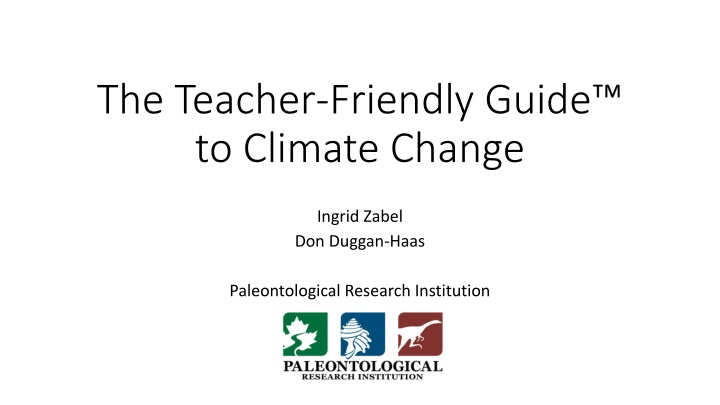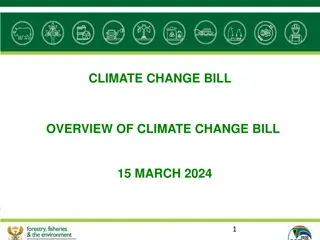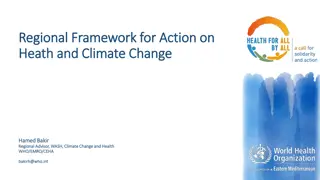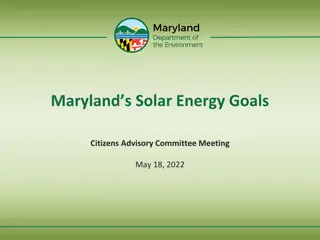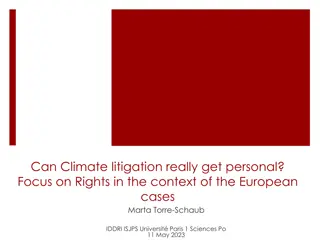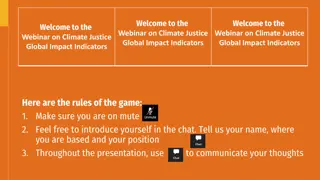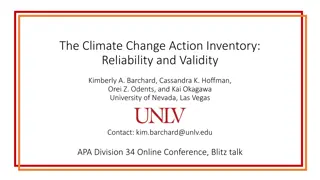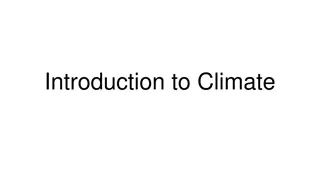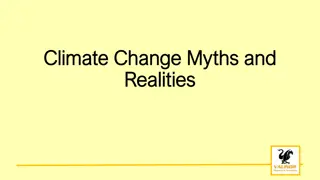The Teacher-Friendly Guide to Climate Change
The Teacher-Friendly Guide to Climate Change authored by Ingrid Zabel, Don Duggan-Haas, Robert Ross, and others explores topics such as climate measurement, natural causes of climate change, historical climate perspectives, and more. It delves into the significance of understanding past climates to comprehend current climate changes, offering a comprehensive resource for educators and learners alike.
Download Presentation

Please find below an Image/Link to download the presentation.
The content on the website is provided AS IS for your information and personal use only. It may not be sold, licensed, or shared on other websites without obtaining consent from the author.If you encounter any issues during the download, it is possible that the publisher has removed the file from their server.
You are allowed to download the files provided on this website for personal or commercial use, subject to the condition that they are used lawfully. All files are the property of their respective owners.
The content on the website is provided AS IS for your information and personal use only. It may not be sold, licensed, or shared on other websites without obtaining consent from the author.
E N D
Presentation Transcript
The Teacher-Friendly Guide to Climate Change Ingrid Zabel Don Duggan-Haas Paleontological Research Institution
Authors: Ingrid Zabel Don Duggan-Haas Robert Ross Alexandra Moore Ben Brown-Steiner Reviewers: Ben Brown-Steiner Warren Allmon Arthur DeGaetano Alex Burrows Lou Derry Heidi Lux Carlie Pietsch Crystal Theesfeld Gang Chen Phoebe Cohen With input and guidance from many others, listed in the Acknowledgements
Contents 1. 2. 3. 4. 5. 6. 7. 8. 9. 10. Obstacles to Addressing Climate Change 11. Perspective 12. Frequently Asked Questions Why Teach About Climate Change? What Should Everyone Understand About Climate Change and Energy? What is Climate? Climate Change Through Earth History Evidence For and Causes of Recent Climate Change US Regional Climates, Current and Future Climate Change Mitigation Geoengineering Climate Change Adaptation
3. What is Climate? Climate is a System Measuring Climate Greenhouse Gases and Global Temperature Natural Causes of Climate Change
4.Climate Change Through Earth History Why Past Climate Change Matters One answer is pedagogical: Though understanding ancient climates is not likely to be the most important thing for students to know about current climate change, it may help students see that climates can change, put the kinds of changes we see today into a historical perspective, and help students understand how researchers use paleoclimates to study our currently changing climate. The idea that the Earth s climate could potentially change is an abstract concept that is outside the range of our personal experiences and was, until a couple hundred years ago, a radical idea. Observing Climate Through Time in the Rock Record History of the Earth's Climate Another answer is scientific and practical: Past climates help scientists understand how the Earth could change by understanding how the Earth has changed There is no practical way to physically test hypotheses derived from [climate] models about the long-term rates of glacial retreat, changes in oceanic circulation, influences on organisms, and so on we can t recreate a global laboratory except in a computer simulation. Climate change events in Earth s history, however, have performed some of the experiments for us. Climate Analogs and Models
5. Evidence for and Causes of Recent Climate Change Changing Temperatures and Carbon Dioxide Shrinking Ice Sheets and Glaciers Changing Sea Ice Extent Thawing Permafrost Rising Sea Level Causes of Recent Climate Change What are the Likely Effects of Climate Change Going to Be?
6. US Regional Climates, Current and Future Describing Climates Northeast Southeast Midwest South Central Northwest Central Southwest West Hawaii Alaska
7. Climate Change Mitigation What is Mitigation? Mitigation and Adaptation in Parallel What We re Up Against Mitigation Pathways and Stabilization Wedges Mitigation Strategies Renewable Energy Nuclear Energy Energy Efficiency and Conservation Carbon Capture and Storage Land Use: Forests, Soils, and Agriculture Waste Management Social Innovation
8.Geoengineering Given the concerns about geoengineering, why consider it at all? Counteracting Climate Change Examples of Carbon Dioxide Removal (CDR) Techniques Examples of Solar Radiation Management (SRM) Techniques Geoengineering Choices
9. Climate Change Adaptation IPCC: Most aspects of climate change will persist for many centuries even if emissions of CO2 are stopped. How Much Does Adaptation Cost? Types of Adaptation Strategies Adaptation to Different Climate Hazards Sea Level Rise Heat Waves Heavy Rainfall Drought Extreme Weather Reduced Snowfall and Snowpack Equity and Social Justice Considerations
Crowdfunding Campaign March 2017: Heartland Institute began sending Why Scientists Disagree About Global Warming book to US teachers May 2017: TFG to Climate Change published Summer 2017: PRI started crowdfunding campaign to send our book to teachers across the US bit.ly/TeachClimateScience Please help spread the word!
